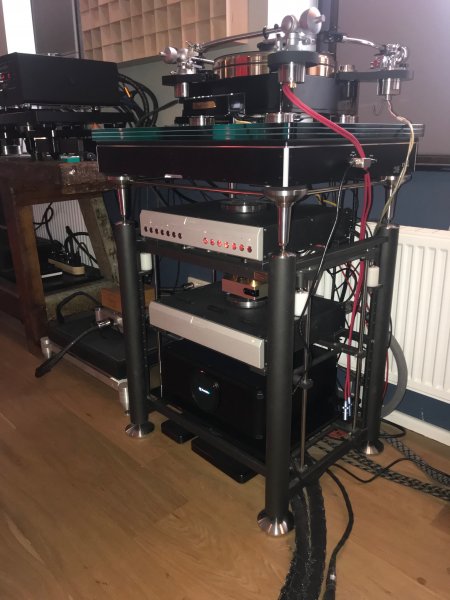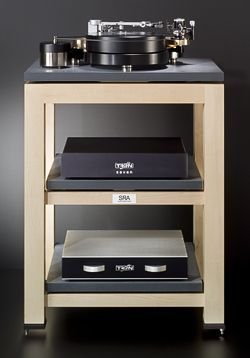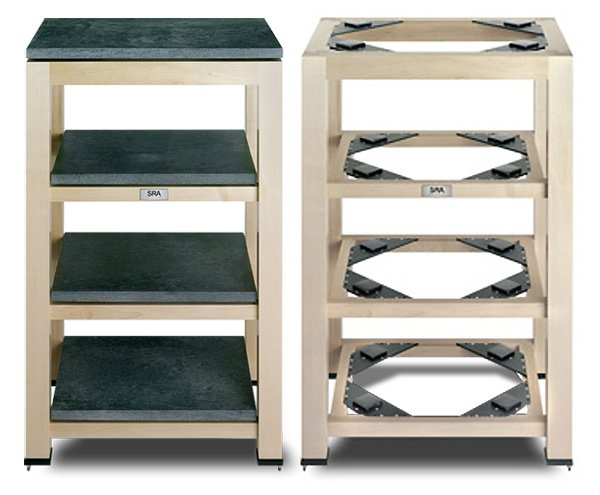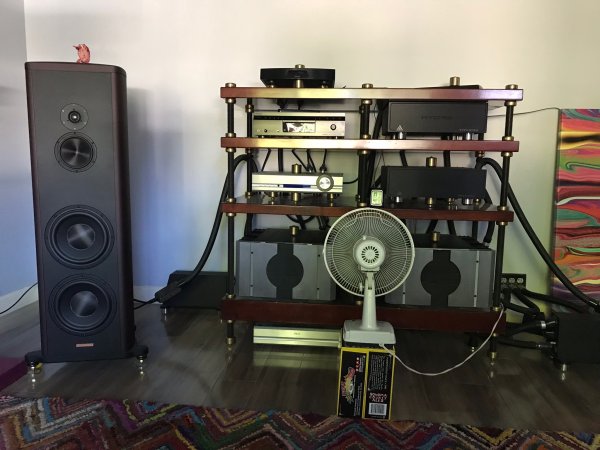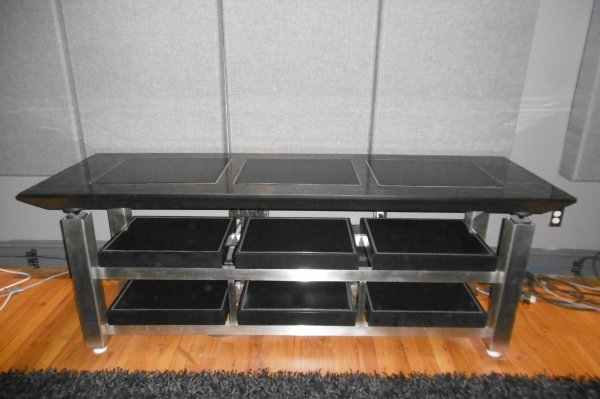....
... So how is possible that this top company study and produce this rack very expensive from 4.000 to 6.000 euro price list that kill the sound?
How to do?
Good questions that deserve sufficient responses.
1. It helps to consider that for the past 40+ years the industry has brainwashed itself into believing that any product related to electrical and mechanical mgmt is nothing but a cheap accessory. Which should demonstrate that the industry and its leaders, if it has any, actually know very little about real performance. But we still have ourselves to blame for taking anybody at their word.
2. Without doubt, there is no less thoughtful and logical consideration given to any sector of high-end audio than managing vibrations. Incomplete, token, and dare I say half-assed efforts run rampant.
3. There exists 3 primary sources of vibrations. Floor-borne, air-borne, and internally-generated. But once captured at the component / speaker the source no longer matters.
4. It's imperative to note that one vibration source is not like the other 2. Two sources vary entirely on multiple variables while one vibration source is a constant the moment equipment is powered on.
5. There exists only 2 primary methods for managing vibrations i.e. isolation and resonant energy transfer. These two methods and their principles are so diametrically opposed that only one must be true and the other just a gross perversion of the one true method. Hence, hybrid solutions are not worth considering as viable methods.
6. Manufacturers are all over the map just as the rest of us regarding vibration mgmt. To this day most/all lack even a basic understanding between the 2 vastly differing methods. A careful study of the contrasts between most vendors' claims and their associated designs, materials, and installation methods should confirm that fact.
7. It is best to assume by default, every last component, speaker, and racking system out-of-the-box is already practicing the vibration isolation method to one degree or another. However, installing certain aftermarket products can slightly improve this default isolation level.
8. Because of #7, we have all already experienced to one degree or another the sonic benefits (if any) of isolation. Hence we should already realize such benefits are minor at best and usually with compromises i.e. better here but worse there.
8. Contrary to popular belief, it's impossible to simultaneously isolate an object from all vibrations. But with a little thought and commitment it is relatively easy to redirect vibrations (mechanical energy) away from our sensitive components / speakers before they can induce their catastrophic harm. Just like a lightning rod attracts and redirects unwanted energy before it can induce its catastrophic harm.
9. When one successfully prevents the travel of floor-borne vibrations from entering the component / speaker, they simultaneously just severed (isolated) the very same mechanical conduit intended to transfer all air-borne and internally-generated vibrations captured at the component / speaker, which now remain trapped within. This is why one vibration source must take precedence over other sources. IOW, choosing a vibration controlling method can never be a both/and but rather an either/or. Ditto when choosing which primary vibration source to address.
10. Mechanical energy, as with perhaps all forms of energy, seeks first and foremost to travel away from its point source (think components and speakers).
11. When an energy's ability to travel is impeded (think isolated and trapped), it will release all of its energy within. Think default out-of-the-box equipment.
12. To isolate an energy is to severe its conduit such that any potential ability of energy to travel ceases in a moment in time. Think of cutting an electrical cord, the act is instantaneous, implying there is zero settling-in time required to achieve any benefits when severing or isolating an energy's conduit.
13. Like a table lamp's electrical current flow along the electrical energy conduit, a mechanical energy conduit must be thorough and complete from beginning to end. IOW, there is little or no forgiveness for any compromise along a mechanical conduit's path and if there is, the entire conduit is deemed inferior and potentially becomes a victim of isolation with catastrophic results. Think default out-of-the-box equipment.
14. Isolation requires only one severing at a single point along the mechanical conduit's path to be deemed fully functioning. In contrast, every connection, fastener, and material must be of superior materials and designs before mechanical energy can sufficiently travel the length of the conduit.
15. In contrast, the benefits of a fully committed resonant energy transfer solution can be literally humongous. In all my experience and when staying within the confines of these basic principles, the sonic benefits of resonant energy transfer are many, they are massive, they are across the entire frequency spectrum, and there are no negatives whatsoever. Such results are to be expected when dealing with basic laws of nature. In fact, I find that the more extreme the effort the more extreme the results.
16. it's important to realize that electrical and mechanical energies are required for our playback systems to even function. Yet, when poorly managed, they will severely cripple our playback systems so they can only perform at their base performance levels due to a universal performance-limiting governor resulting from inferior vibration controlling methods (think hi-fi sound).
So why all the hub-bub about vibration mgmt? Though impossible to prove on paper where it seems every audio battle is won or lost these days, distortions induced by poorly managed vibrations are grossly under-rated as they and they alone are responsible for the universal performance-limiting governor crippling every last sensitive components' precision and accuracy. In fact, I attest the distortive harm induced by poorly managed vibrations easily outweigh all other distortions and possible component / speaker upgrades combined.
I could go on but hopefully I've sufficiently answered your first question.
Your other question was, what to do? If (and it so) that my claims above are true, I suggest seeking vendors fully committed to the resonant energy transfer methodology whose words, designs, materials, and installation methods seem entirely consistent.
Good luck.
BTW, you may want to reconsider your definition of a "top" company.







